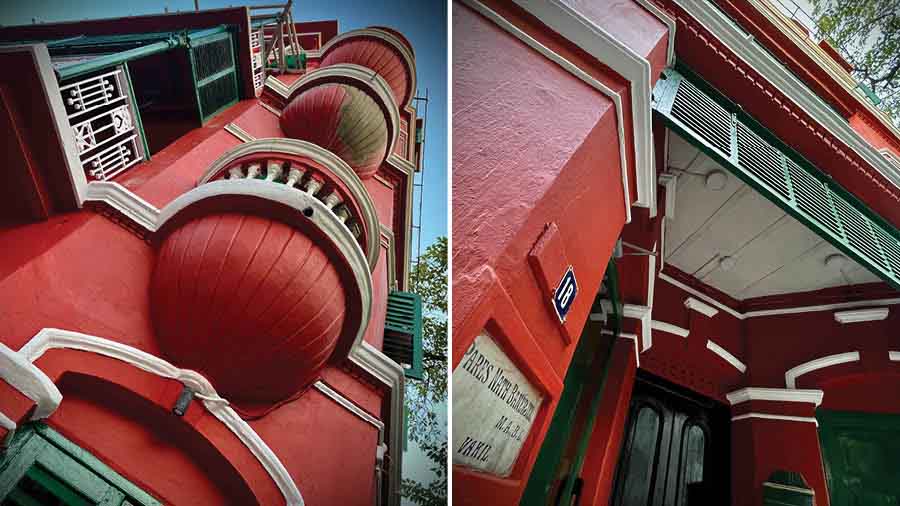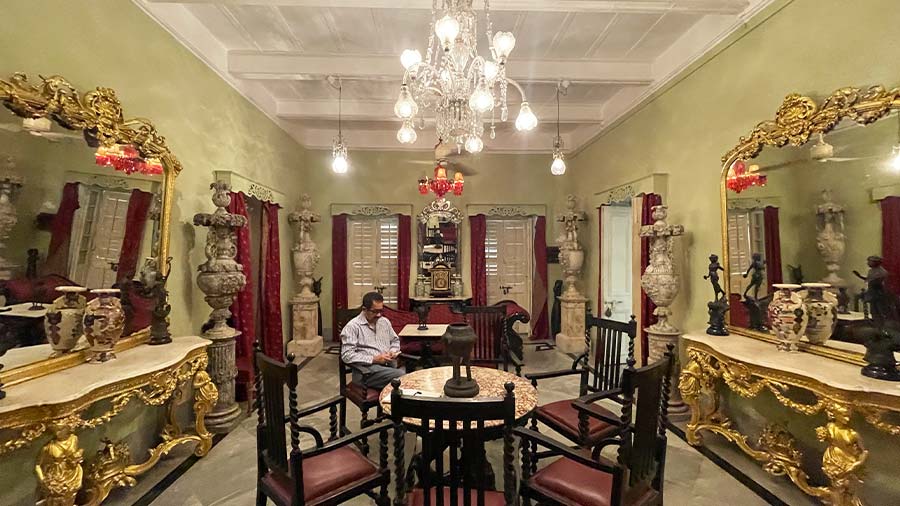In 13 months, The Red Bari (18, Sadananda Road) has graduated from obscurity to Conde Naste Traveller, for being a vibrant addition to Calcutta’s mosaic.
Until October, 2022, The Red Bari was a disused century-old three-storeyed building in the Kalighat Temple neighbourhood of south Kolkata. The Banerjees — builders — had vacated their ancestral property to move to a larger Salt Lake home. Their ancestral building warranted increasing repairs. Neighbourhood parking space was at a premium. Rooms appeared small by modern standards. There was no architectural provision for an elevator. The increasing vehicular pollution — sound and smoke — could not be Fenesta-ed.
The Banerjees arrived at a family consensus: ‘Sell, but not destroy.’ At first glance, this appeared contradictory: anyone buying would encounter similar challenges. Any structural or architectural deviation would attract municipal censure. Any buyer intending to replace the legacy with a stainless-cum-glass combination would be restrained by the family code.

Until October, 2022, The Red Bari was a disused century-old three-storeyed building in the Kalighat Temple neighbourhood of south Kolkata
The Red Bari may well have rotted into the shadows. What it needed was not someone with a new pair of glasses; it needed a new pair of eyes. Someone to say, ‘I think we can adapt around the building’ or ‘Only nominal changes will be necessary to repurpose effectively’.
The white knight came in the form of Avantika Jalan, who cannot be a day older than 28. This is her story: “I entered the Banerjee residence on November 29, 2022, and the first thing that struck me was the number of doors (followed by red floors, tiled floors, front and side balconies and spiral-staircased terrace). We promised we would retain not only the building architecture but every piece of wood we found on the premises — in the door and window frames — with no replacement. There would be a lift at the back that would not be visible to most visitors; there would be room repurposing across all four storeys to appeal to different audiences; ‘Kalighater bari’ would be renamed The Red Bari. That’s when the Banerjees began to engage.”
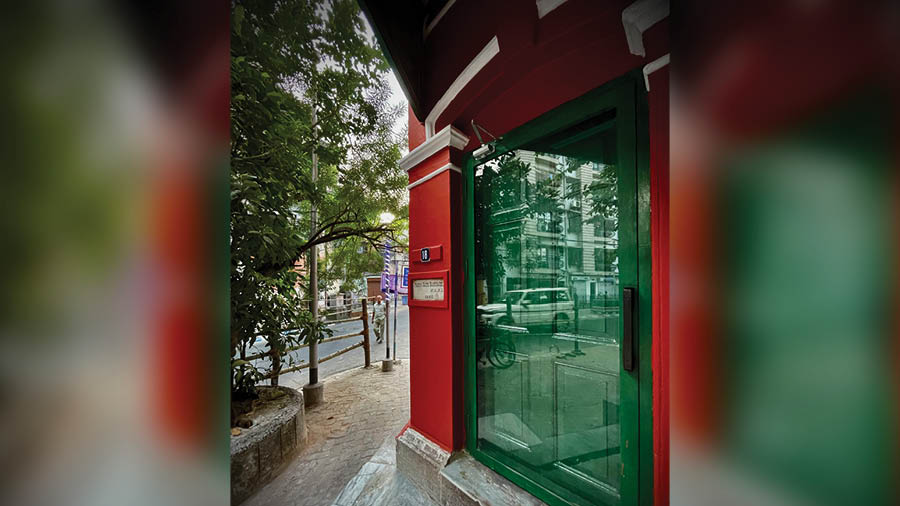
When this structure was designed, ‘draft’ was prioritised. The result is that 12 windows and 14 doors were designed into each floor with six circular balconies
But there is something else that Avantika assured: the architectural repurposing would be one thing; she would also preserve in some way the memory of the Banerjees. Anyone walking into the premises (café as it turned out) would not only get a flavour of the caffeine but also a whiff of all those who had lived in it across the decades. She would not only preserve the arches and beams; she would attempt to preserve the memories of its erstwhile residents. She would not only present a menu of the ‘day’s special’ but also nudge the visitor towards ‘Let me tell you the history of the place where you are sitting’.
And that story would start with the Banerjees. “Kalighater Bari (as we refer to The Red Bari) is not just a structure on 18 Sadananda Road,” says septuagenarian Jyotirmoy Banerjee, “but the story of four generations. The bari is more than brick and mortar; it is a goynar baksho of the lives of more than 30 individuals. The bari is not just an address; it represents an emotional echo of voices, memories and legacies. Kalighater bari may have been divested in the physical sense, but there is another bari that will never be sold, a bari that lies in the memory, values and discipline of the four generations who built it, lived within and were shaped by it. The result is that we will ‘carry’ Kalighater Bari wherever we go, even as we may have left it in one sense for the new owners to benefit from its spirit. When one examines the subject from this perspective, the house is not – and has not been – a passive property; it is a living personality. It does not just provide shelter; it extends its vibes – through space, light, draft, location and style – to anyone who enters within. Our family benefited from its use for around 100 years and we have handed it to the next buyer to benefit from it.”
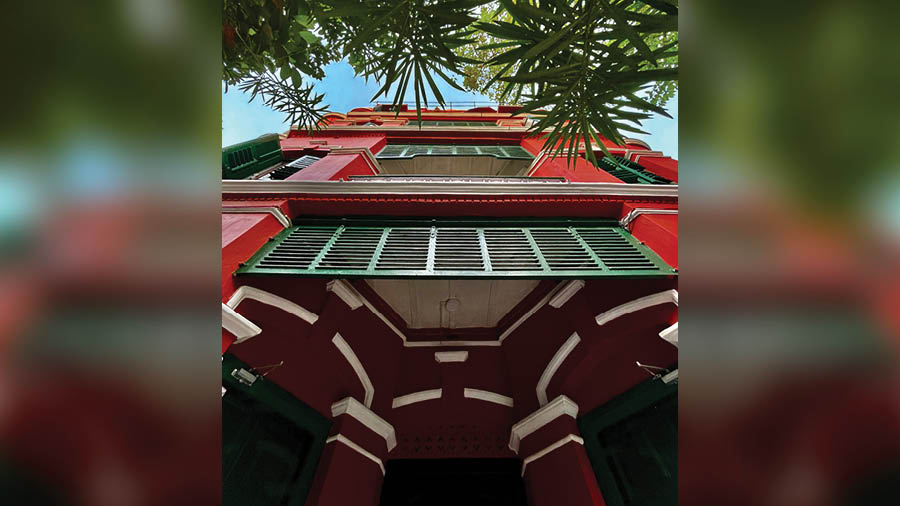
‘The bari is more than brick and mortar; it is a ‘goynar baksho’ of the lives of more than 30 individuals,’ said Jyotirmoy Banerjee
Jyotirmoy babu’s mind flashes past rich memories. To the day in April, 1953, for instance. “I can recollect the body of my 56-year-old grandmother being angled downwards on a stretcher and being carried by male family members… the women of the household weeping loudly, drawing the aanchal across their faces held by clenched teeth. The family had been exposed to death in other homes, but in our Kalighater Bari, this was the first time we were seeing a near-permanent fixture moving on. The handwritten diary of my grandfather and patriarch Pares Nath Banerjee did not just record ‘My wife passed away’; he cryptically registered: ‘Eastern part of the middle room on the second floor with two cots’ as the place where it happened. Seventy years later, there will be a documented history of what happened where: the place where people sit for coffee is the place where legal briefs was once examined, and where clients were engaged. This restoration is not merely architectural preservation; it is also the preservation of the mini-histories of spots and spaces within.’
The Red Bari’s architecture was influenced by the founder. His Gopalpur residence (where he came from) had poor ventilation with virtually no windows, so when this structure was designed, ‘draft’ was prioritised. The result is that 12 windows and 14 doors were designed into each floor with six circular balconies; the southern verandah is nearly 40 feet long, receiving six hours of unhindered sunlight a day.

Red Bari at night
Avantika immediately waded into challenges. One, the building had been constructed with churn-surkee so repairs warranted going back to legacy building material (cement would have been easier) to protect construction integrity. Two, karigars with this competence could be located only in Murshidabad. Three, binding old and new lime layers proved challenging. Four, when one of the arches collapsed, the contractor insisted on flattening the rippled curves so that his work could become simpler (averted eventually through guidance). Five, the 3,000-litre courtyard water tank consumed 250sq ft that reduced the potential number of tables (and hence profitability). Six, the metal pipe conduit that channelised rainwater from one roof to another at a lower level needed to be replaced without using PVC. Seven, each time the workflow accelerated, the labourers would decamp to their mulook. Eight, the supervisor would appear every few days with the question “Yeh purana architecture design kyun rakhna chaahte ho?” because a shorter cut (read modern alternative) would be convenient.
The result is that the restoration was 80 per cent complete when the ground floor of Red Bari was opened to the public as a café on October 20, 2023 (first floor to be used as a co-working space, second floor to be an open format multi-activity centre and the third floor to retained as a private apartment).

The Red Bari’s architecture was influenced by the founder
What were the upsides? Avantika again: “The way the neighbourhood received us. They could have seen us as individuals from another ethnic background; they could have seen us as upstarts. On the other hand, they told us something: “We are friends of this house first,” evoking an enduring loyalty to the structure’s occupants as well. We were told: “If you run short of parking for your customers, we will help you.” During Kali Puja 2023, we were not only invited to attend the ceremony, but The Red Bari was included in the neighbourhood illumination coverage (‘What colour of lights would you like?’). It sent out a Morse code: you are now a part of us.”
When patrons and the previous owners entered, the response was better. “We had planned to put up pictures on a blank wall inside the cafe but this was delayed as we did not wish to drive a nail into any wall,” says Avantika. “Café visitors told us that they liked the wall just the way it was – plain and blank. So that it is how it will stay. When the previous owners came for the first time following the restoration, they took one look at the polished floor, painted arches and the re-spaced courtyard and said, ‘Ki jay korechhen…’”
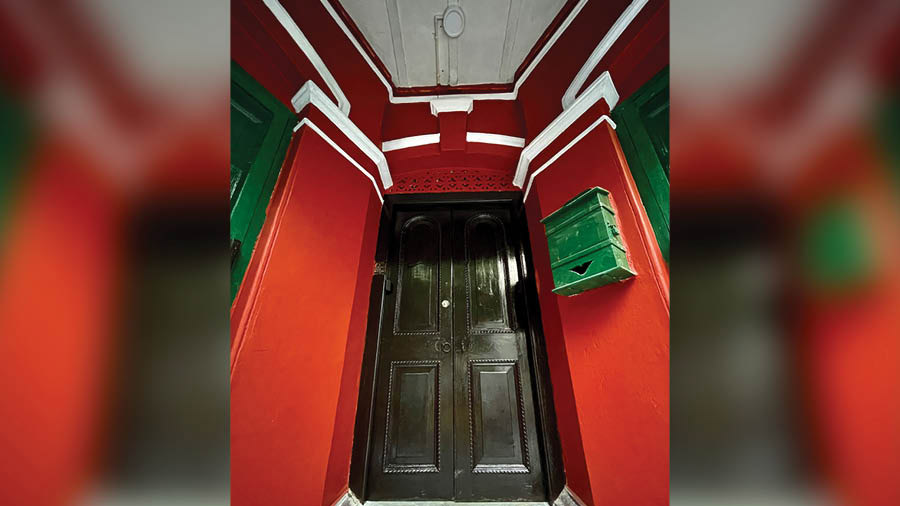
One of the 14 doors
Avantika went one step further. She commissioned a book on the property that will be available for sale or café browsing. This endeavour to treat a non-celebrity neighbourhood building structure as a ‘personality’ could open the field for storytellers. “There is perhaps no city in India (with the possible exception of Delhi) with as rich a combination of built-unbuilt heritage as Kolkata. This book will tell the story of the building, its previous occupants and current avatar, enhancing its respect. Besides, we wish to send out a message that we are willing to provide our advice or network to anyone needing to repurpose their old homes.”
I can hear what she is not saying. That when this accelerates, there could be a greater willingness of leisure seekers to say ‘Aamra oi purona bari-tay adda mari.’ As opposed to ambling through an impersonal mall.
There is hope.


